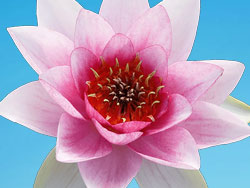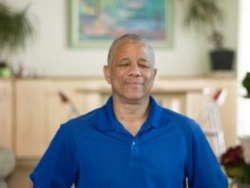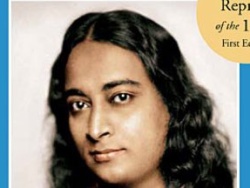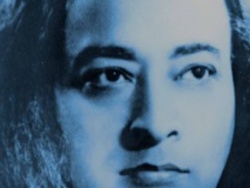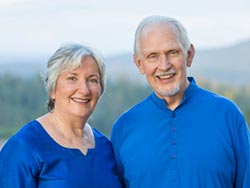Swami Kriyananda (1926 - 2013) was a Direct disciple of Yogananda since 1948 and is the founder of Ananda. He is not on the altar, but is revered by seekers as a model of discipleship, and a “friend and guide” on the path. At his guru’s request, for 65 years and until the day of his passing, he devoted himself tirelessly to lecturing, writing, counselling, and guiding many students worldwide. In 1968, inspired by Yogananda’s dream of spiritual communities, he founded the first of what are now many Ananda communities and teaching centers worldwide where people can devote themselves to the practice of Self-realization.
A YOUNG MAN ON A SPIRITUAL SEARCH
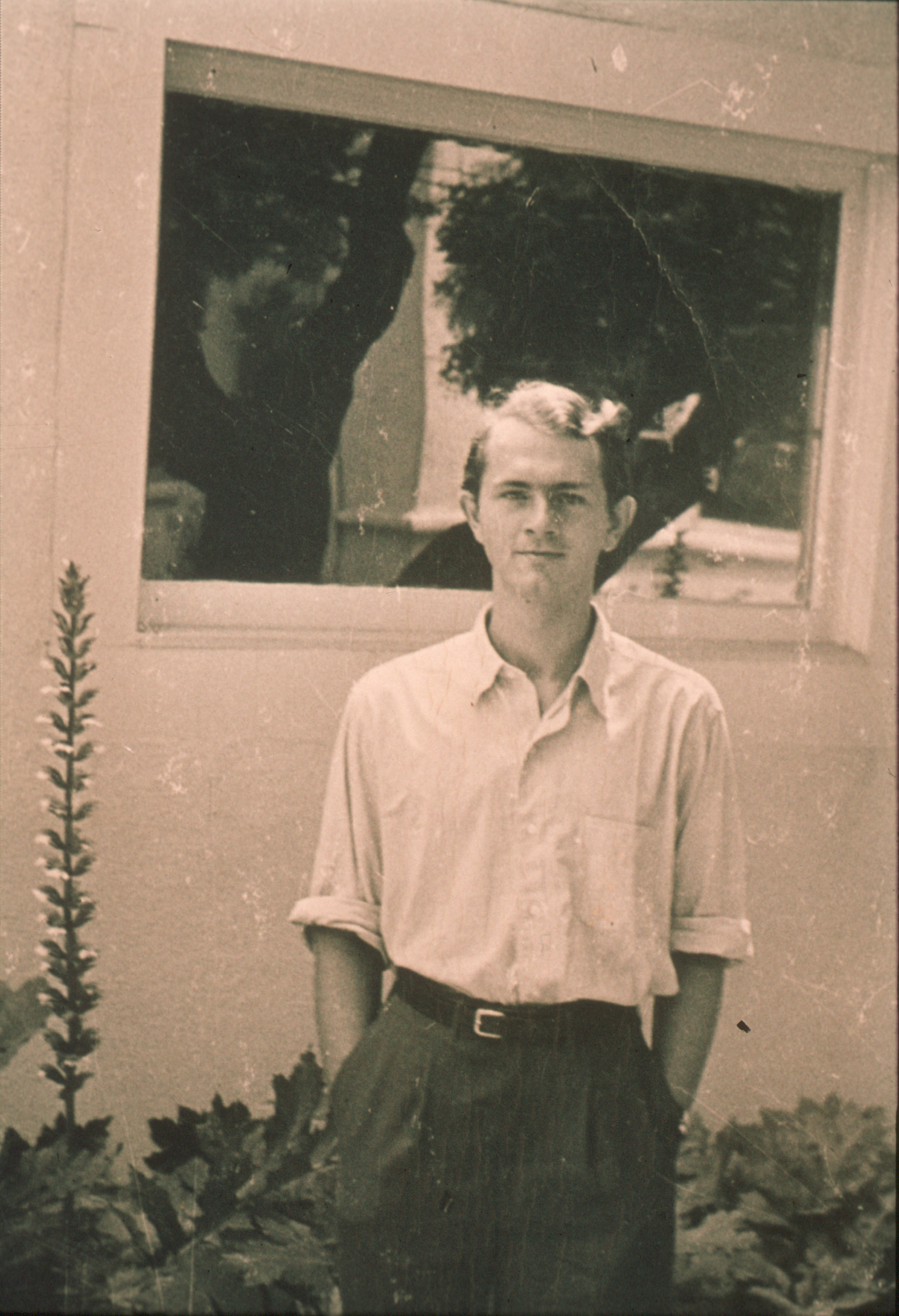 James Donald Walters (Swami Kriyananda) was a young man of considerable intellect and a burning desire for truth that isolated him from most of his peers at the time. It was 1948, and life in post-WWII America was a desperate scramble for normalcy. Millions of young people were seeking home, family, and career—anything that could soothe the horrors of war and the insecurity of the Depression.
James Donald Walters (Swami Kriyananda) was a young man of considerable intellect and a burning desire for truth that isolated him from most of his peers at the time. It was 1948, and life in post-WWII America was a desperate scramble for normalcy. Millions of young people were seeking home, family, and career—anything that could soothe the horrors of war and the insecurity of the Depression.
But James Donald Walters knew that kind of life would not bring him what he was looking for. He was hungry to know what life was really about. Why we lived, what we were here to understand. Was there a Truth that could be known? He hadn’t found it in philosophy, churches, nature, or simple living, though he had tried them all.
The first wave of what would later become many spiritual teachers from the East began in America in the 1890s with a lecture tour by Swami Vivekananda. Paramhansa Yogananda (1893–1952) followed soon after, and became the first Indian yogi to make his home in America. Though he met two Presidents and lectured to many thousands around the country for years, it wasn’t until his Autobiography of a Yogi was published in 1946 that Yogananda became known to a much wider audience. Eastern spirituality was just beginning to awaken Western minds in the 20th century with the possibility of direct, personal experience of transcendent spiritual realities. Ideas like meditation and yoga were introduced to Americans by these two early yoga masters.
FIRST MEETING WITH HIS GURU
 Walters read the Autobiography virtually without stop and was overcome with the certainty that the author knew how to find what he was seeking. He boarded a bus and travelled cross-country for three days and nights to arrive at a Self-Realization Fellowship church where Yogananda had just lectured. Yogananda agreed to meet him because “Divine Mother told me to see you.” In that first meeting, he accepted the young man as a disciple. From Kriyananda’s description of that meeting in The New Path:
Walters read the Autobiography virtually without stop and was overcome with the certainty that the author knew how to find what he was seeking. He boarded a bus and travelled cross-country for three days and nights to arrive at a Self-Realization Fellowship church where Yogananda had just lectured. Yogananda agreed to meet him because “Divine Mother told me to see you.” In that first meeting, he accepted the young man as a disciple. From Kriyananda’s description of that meeting in The New Path:
Gazing at me now with deep love, Yogananda said, “I give you my unconditional love.”
Immortal promise! I couldn’t begin to fathom the depth of meaning in those words.
“Will you give me your unconditional love?”
“Yes!”
“And will you also give me your unconditional obedience?”
Desperately though I desired acceptance, I had to be utterly honest. “Suppose, sometime,” I asked, “I think you’re wrong?”
“I will never ask anything of you,” he solemnly replied, “that God does not tell me to ask.”
He continued, “When I met my master, Sri Yukteswar, he said to me, ‘Allow me to discipline you.’ ‘Why, Sir?’ I inquired. ‘Because,’ he replied, ‘in the beginning of the spiritual path one’s will is guided by whims and fancies. Mine was, too,’ Sri Yukteswar continued, ‘until I met my guru, Lahiri Mahasaya. It was only by attuning my haphazard will to his wisdom-guided will that I found true freedom.’ In the same way, if you attune your will to mine, you too will find freedom. To act only on the inspiration of whims and fancies is not freedom, but bondage. Only by doing God’s will can you find what you are seeking.”
“I see,” I replied thoughtfully. Then from my heart I said, “I give you my unconditional obedience!”
My Guru continued: “When I met my master, he gave me his unconditional love, as I have given you mine. He then asked me to love him the same way, unconditionally. But I replied, ‘Sir, what if I should ever find you less than a Christlike master? Could I still love you the same way?’ My master looked at me sternly. ‘I don’t want your love,’ he said. ‘It stinks!’”
“I understand, Sir,” I assured him. He’d struck at the heart of my greatest weakness: intellectual doubt. With deep feeling I said to him, “I give you my unconditional love!”
He placed the forefinger of his right hand on my chest over the heart. For at least two minutes his arm vibrated almost violently. Incredibly, from that moment on, my consciousness in some all-penetrating manner was transformed.
I left his interview room in a daze. Norman, on hearing that I’d been accepted, embraced me lovingly. It was unusual, to say the least, for anyone to be accepted so quickly. A few moments later, Master came out from behind the open curtain on the lecture platform. Smiling at us quietly, he said:
“We have a new brother.”
A LIFE OF SERVICE
 Unlike the 1960s when many young people were drawn to Eastern teachers, few came to live in Yogananda’s monastery in the 40s and 50s. And relatively few stayed. It was a life of long, daily meditation and service to others. But Walters blossomed. He had a natural capacity for deep meditation, a penetrating mind, an openness to learning, and a burning desire for truth. Yogananda knew one of his own had come. He soon made 22-year-old Walters head of the male monastics, brought him to his desert retreat to help with editing his writings, and told him on several occasions, “You have a great work to do.” He spent many hours talking about the teachings of Yoga to his young disciple and said that he would become a writer and a teacher. When Walters protested that he didn’t feel adequate to the task of teaching, Yogananda replied sternly, “Living for God is martyrdom!” And then more gently he added, “You’d better learn to like it, for that is what you will have to do.”
Unlike the 1960s when many young people were drawn to Eastern teachers, few came to live in Yogananda’s monastery in the 40s and 50s. And relatively few stayed. It was a life of long, daily meditation and service to others. But Walters blossomed. He had a natural capacity for deep meditation, a penetrating mind, an openness to learning, and a burning desire for truth. Yogananda knew one of his own had come. He soon made 22-year-old Walters head of the male monastics, brought him to his desert retreat to help with editing his writings, and told him on several occasions, “You have a great work to do.” He spent many hours talking about the teachings of Yoga to his young disciple and said that he would become a writer and a teacher. When Walters protested that he didn’t feel adequate to the task of teaching, Yogananda replied sternly, “Living for God is martyrdom!” And then more gently he added, “You’d better learn to like it, for that is what you will have to do.”
 And thus began a life of service to his guru that can scarcely be imagined, except that hundreds of people personally witnessed it, some for as long as 40 years themselves on the path, working shoulder to shoulder with him. For a span of nearly 65 ceaselessly busy years, Walters (Swami Kriyananda) expended every ounce of energy in fulfilling his guru’s work, which included writing some 150 books, teaching nearly continuously in America, Europe, and India to audiences in the thousands, founding several spiritual communities around the world (a long-cherished dream of Yogananda’s), composing hundreds of pieces of music, establishing a new model for children’s education (Education for Life schools), keeping up with endless correspondence, praying for those in need, offering training and mentoring to countless students on the spiritual path in ways that were unique to the needs of each individual. Despite increasingly frail health, he continued a breakneck pace of teaching and writing even in his eighties until just weeks before his passing that left companions in their twenties racing to keep up.
And thus began a life of service to his guru that can scarcely be imagined, except that hundreds of people personally witnessed it, some for as long as 40 years themselves on the path, working shoulder to shoulder with him. For a span of nearly 65 ceaselessly busy years, Walters (Swami Kriyananda) expended every ounce of energy in fulfilling his guru’s work, which included writing some 150 books, teaching nearly continuously in America, Europe, and India to audiences in the thousands, founding several spiritual communities around the world (a long-cherished dream of Yogananda’s), composing hundreds of pieces of music, establishing a new model for children’s education (Education for Life schools), keeping up with endless correspondence, praying for those in need, offering training and mentoring to countless students on the spiritual path in ways that were unique to the needs of each individual. Despite increasingly frail health, he continued a breakneck pace of teaching and writing even in his eighties until just weeks before his passing that left companions in their twenties racing to keep up.
Discipleship
 “The only way I want people to remember me,” said Swami Kriyananda, “is that, ‘He was a good disciple.’” Those who worked with him closely agreed. Whether it was will power or love, or a peculiar grace, it was the fruit of what yogis say are lifetimes of effort. In his last years, he could hardly speak without tears. He often spoke of indescribable states of bliss, and when you looked into his eyes, you felt it too. He found the Truth he’d been seeking. And he told us we would find it, too. That Truth has long been the promise of the sacred texts of East and West. But not many make the effort. “The harvest is plenteous,” said Jesus. “But the laborers are few.” Farewell to one who labored well. And who showed the way, so others might do the same.
“The only way I want people to remember me,” said Swami Kriyananda, “is that, ‘He was a good disciple.’” Those who worked with him closely agreed. Whether it was will power or love, or a peculiar grace, it was the fruit of what yogis say are lifetimes of effort. In his last years, he could hardly speak without tears. He often spoke of indescribable states of bliss, and when you looked into his eyes, you felt it too. He found the Truth he’d been seeking. And he told us we would find it, too. That Truth has long been the promise of the sacred texts of East and West. But not many make the effort. “The harvest is plenteous,” said Jesus. “But the laborers are few.” Farewell to one who labored well. And who showed the way, so others might do the same.
Swami Kriyananda passed away peacefully in Assisi, Italy at 8 am on Sunday, April 21, 2013. He was 86.

